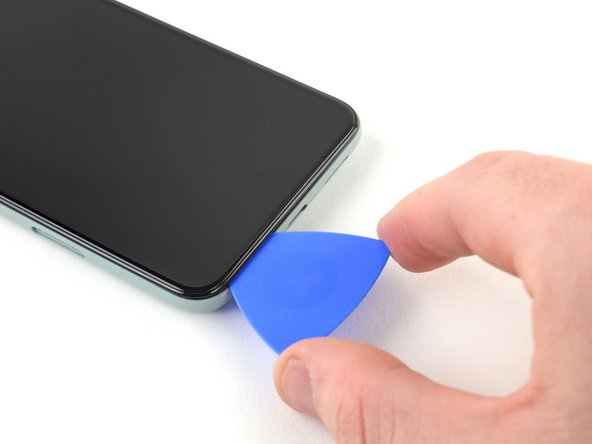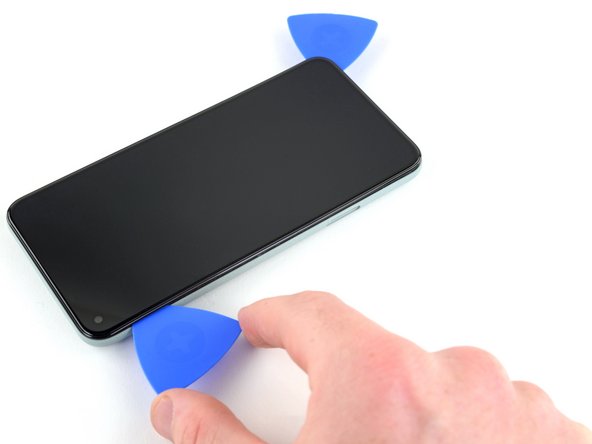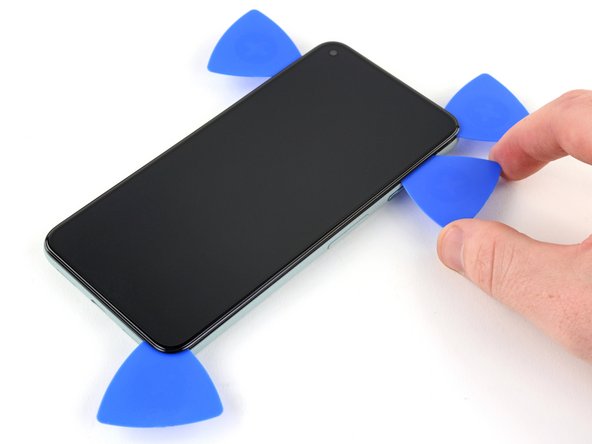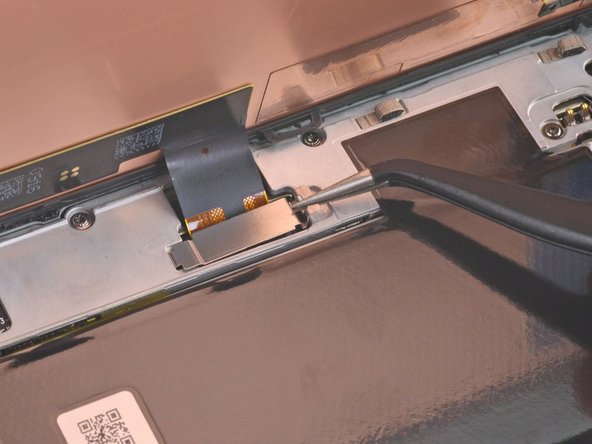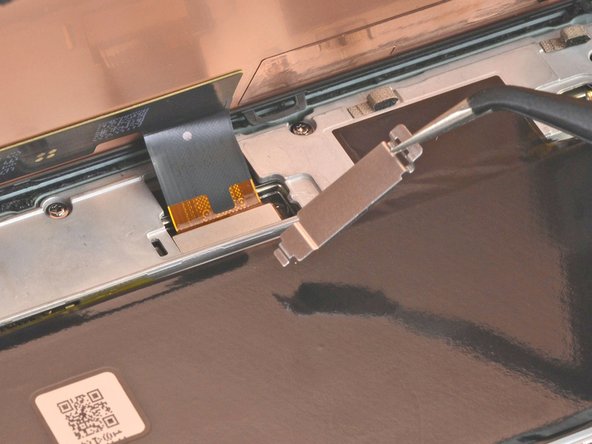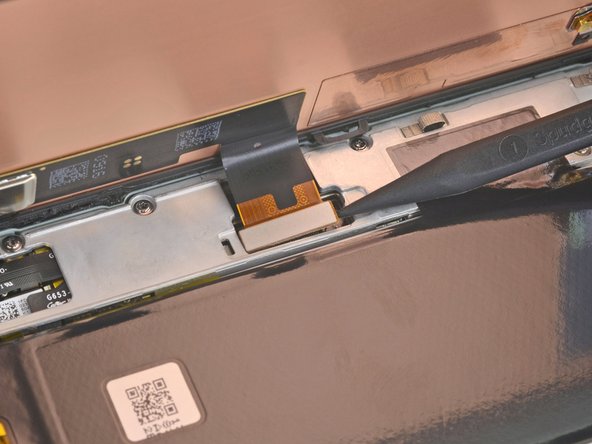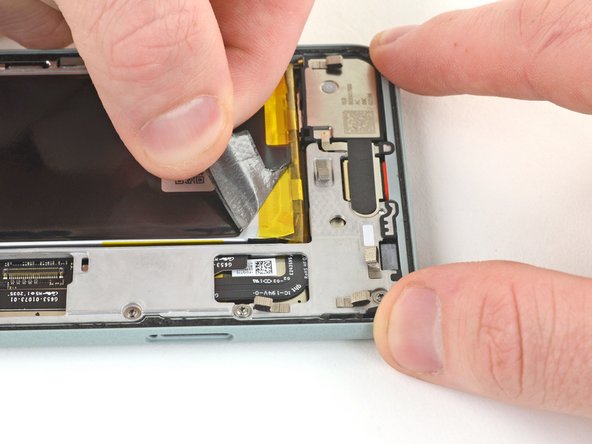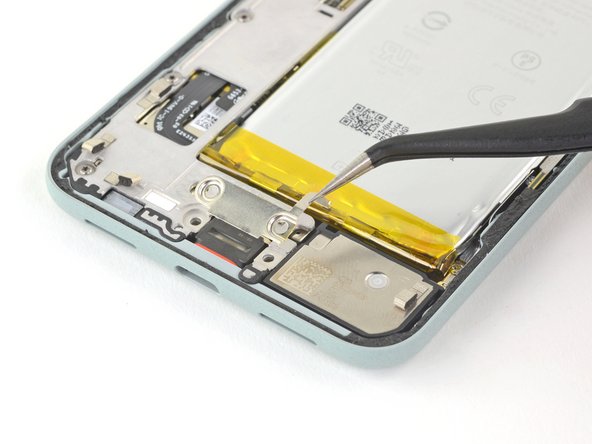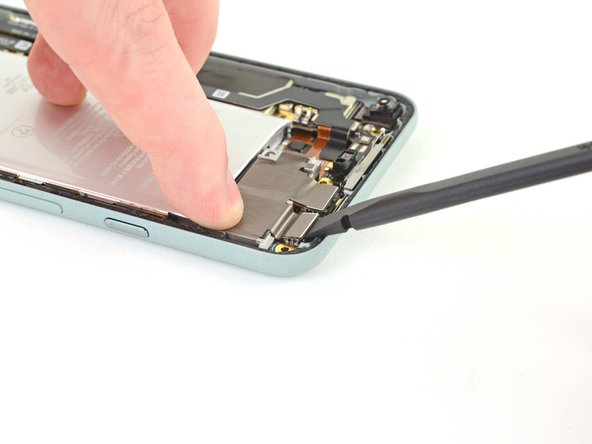DIY Google Pixel 5 Front Camera Replacement Guide
Duration: 45 minutes
Steps: 40 Steps
This repair guide comes to you from the awesome folks at Salvation Repair, but it’s not officially backed by Google. Want to learn more about our repair guides? Check them out here!
For your safety, make sure to let your battery drop below 25% before diving into your phone disassembly. Safety first, right?
Heads up:
This repair guide comes from the awesome team at Salvation Repair, and while Google hasn’t given it a thumbs up, we’re here to help you out! Ready to tackle the front camera replacement on your Google Pixel 5? Before you dive in, make sure your battery is below 25% to keep things safe and sound. This way, if the battery gets a little too cozy during the repair, we can avoid any thermal surprises. And hey, if your battery looks a bit wonky or damaged, it’s best to swap it out for a fresh one—safety first! If you need help, you can always schedule a repair.
Step 1
– Time to get started! Insert a SIM eject tool, a trusty paper clip, or a bit into the SIM card tray hole – it’s like a little key to unlock your phone’s secrets.
– Give it a firm press to eject the SIM card tray. You got this!
– Now, carefully remove the SIM card tray. If you need help, you can always schedule a repair
Hey there! You’re in the right spot if you’ve got your eyes on the SIM card tray. Just so you know, it’s chillin’ on the left home along the bottom of your phone, smooth criminal that it is. Might want to take a little gander there, my friend. Ain’t no need to get all frowny face if you ain’t finding it. You can always pop over to schedule a repair and let the experts show you the ropes. No sweat, no worries!
Step 2
A hair dryer, heat gun, or hot plate will help you get the job done, just make sure you don’t overdo it! The display and internal battery don’t like to get too hot. If you need help, you can always schedule a repair
– Warm up an iOpener and press it against the bottom edge of the screen for a solid minute.
Step 3
While you’re giving the adhesive some time to chill, here’s a little something to keep in mind:
– Screen seam : This seam is where the screen meets the rest of the phone. Don’t even think about prying there, amigo!
– Bezel seam : Here’s where the plastic bezel that protects the screen meets the frame. It’s held in place by some trusty plastic clips. This is the spot you’ll want to pry, but be careful, those clips are delicate!
Step 4
In the next couple of steps, we’ll introduce you to the Anti-Clamp, our nifty little tool designed to make opening your device a breeze. If you’re not using the Anti-Clamp, feel free to skip ahead two steps for a different approach.
For a detailed walkthrough on how to use the Anti-Clamp, check out this guide.
If your device’s surface is a bit too slick for the Anti-Clamp to grip, don’t worry! A little packing tape can work wonders to create a better hold.
– Gently tug the blue handle toward the hinge to kickstart the opening process.
– Place the suction cups close to the bottom edge of the screen—one on the front and the other on the back.
– Press down on the cups to create a strong suction in the desired spot.
Step 5
Take it easy on that turn! Just a half twist at a time, and give it a minute to chill between each move. Let the Anti-Clamp and some patience do their magic for you.
Keep those suction cups buddies in line! If they start to get a little too friendly and lose their alignment, just loosen them up a bit and give ’em a little nudge back into position.
If that Anti-Clamp isn’t making enough space for your tools, give that area some love with a little extra heat. Then, give the handle a little clockwise twist – just half a turn should do the trick!
– Give that blue handle a push away from the hinge – it’s time to open things up!
– Now, spin that handle clockwise ’til those cups start to stretch out. You’ll see what we mean!
– Hang tight for a minute. We want that adhesive to chill out and give us some room to work.
– Once the Anti-Clamp makes enough space, slip that opening pick under the screen and its frame. Easy peasy!
– Skip the next step. We’ve got you covered.
Step 6
If your screen is looking like a spider web, no worries! Just follow this guide to tape over those cracks. And if you’re really in a bind, a little superglue on the suction cup can help stick it to the broken screen.
Depending on how old your device is, this might be a bit tricky. If you’re having a tough time, just add a bit more heat and give it another go!
– Attach a suction cup to the screen, right next to the edge you’ve heated up. This will be your trusty sidekick for the next few steps.
– Now, pull up on that suction cup with some steady force – you got this! You’re creating a gap, and that’s exactly what you need.
– Time to bring in the opening pick. Slide it into the gap you just made, and you’ll be one step closer to fixing your device. If you need help, you can always schedule a repair
Step 7
– Gently glide that opening pick back and forth along the bottom edge of the screen to slice through the adhesive like a pro.
– Keep the pick snugly in the bottom right corner to stop the adhesive from getting all clingy again.
Step 8
– Warm up that iOpener and give it a cozy minute on the left edge of your screen. You’ve got this!
Step 9
Be careful not to insert the pick more than 1/4 inch (6 mm) – doing so may damage the screen’s flex cable, located in the middle of the left edge. If you’re unsure, don’t hesitate to schedule a repair
– Alright, let’s get this party started! Slide another opening pick into the bottom left corner of the screen. It’s like a little dance move!
– Now, glide that pick around the left corner, keeping it smooth and steady. Think of it as a stylish slide across the dance floor!
– Keep on sliding that pick towards the front camera, like you’re showing off some sweet moves! This is the part where we cut through the adhesive holding the screen on.
– Don’t let that adhesive re-seal itself, leave that pick in place! It’s like a safety net for your screen.
Step 10
If you’re having a tough time slicing through that adhesive, give the area a little cozy heat for a minute and then take another swing at it.
– Let’s get this party started by sliding another opening pick into the top left corner of the screen.
– Now, take that pick for a little spin around the front camera and across the top edge of the phone. Keep it movin’!
– Slide that pick to the top right corner of the phone and leave it in place. You’re doing great!
Step 11
Now, take a moment to run that opening pick around the edges one more time. The adhesive is usually thickest at the corners, so make sure you’ve got it all cut. If you need help, you can always schedule a repair
– Start by slipping an opening pick into the lower right corner of your screen. Don’t worry, this is just a gentle nudge to get things going!
– Now, slide that pick all the way up to the top right corner to effortlessly slice through the last bit of adhesive. You’ve got this!
Step 12
Hey, don’t go crazy with opening that screen! Keep it under 90 degrees to avoid messing up the screen’s flex cable. If you need help, you can always schedule a repair.
– Grab that trusty opening pick and gently nudge up the left edge of the screen just a smidge—enough to prevent those clips from doing their snap-back thing into the case.
– Now, give the right side of the screen a little lift and swing it open like you’re unveiling a secret book, and voilà!
Step 13
– Grab that screen connector cover with your trusty tweezers, giving a firm grip on the screen flex cable.
– Now, gently push the clip towards the connector to pop it loose. You’re doing great!
Tools Used
Step 14
Hang onto this component, you’ll need it again when you’re putting everything back together.
– Time to get your hands a little dirty! Go ahead and take off that screen connector cover.
Step 15
– Grab your trusty spudger and gently pry up to disconnect that screen flex cable. You’ve got this!
– When it’s time to re-attach, align those connectors just right. Press down on one side until you hear that satisfying click, then do the same on the other side. Remember, no pressing in the middle! If things get a bit wonky, the pins might bend, and we definitely don’t want that. If you need help, you can always schedule a repair.
Tools Used
Step 16
When using isopropyl alcohol to clean the adhesive off the display, be careful not to splash it onto other components – it can weaken their adhesive bond. If you’re unsure, don’t hesitate to schedule a repair and let the pros at Salvation Repair help you out.
Pick up those tiny tweezers, you little superstar! Gently pry off the last stubborn bits of adhesive with their tiny pointy ends. If it’s too much of a challenge, remember, you’re a rockstar and you can always schedule a repair!
– Alright, let’s get this screen swapped out! First things first, remove that old screen. It’s like saying goodbye to an old friend (but a broken one).
– If you’re rocking a new screen, make sure to check out the front-facing camera hole – those pesky protective liners might be hiding out there. Give them the boot!
– Hey, if your new screen’s display cable is stuck down with tape, give that tape the heave-ho before you start installing the new screen. It’s all about that clean install.
– If you’re using custom-cut adhesive, check out this guide on how to apply it like a pro: schedule a repair
– If you’re using Tesa tape to reattach the screen, this guide has all the tips you need: schedule a repair
– Once you’ve got everything back together, you’ll notice the screen goes through a calibration sequence. Don’t touch it during this process, or you might mess up the touch calibration and end up with some finger-frustrating issues. Just let it do its thing!
Tools Used
Step 17
Be careful when handling the battery – if it gets punctured or bent, it could leak chemicals or overheat. If you’re not comfortable with this step, don’t worry, you can always schedule a repair and let the pros handle it.
– Grab your trusty tweezers and carefully lift the graphite tape until you can get a good grip on it with your fingers.
– Now, simply peel off the graphite tape – you’re making great progress! If you need help, you can always schedule a repair
Tools Used
Step 18
Keep that graphite pad in tip-top shape, and you can totally reapply it when putting everything back together!
– Grab your trusty tweezers and carefully peel back the graphite pad that’s protecting the charging plate cover. It’s like giving the charging plate a little peek-a-boo!
Tools Used
Step 19
Stay organized during this repair by keeping track of each screw and making sure it ends up back in its original spot. If you need help, you can always schedule a repair
– Let’s get started by removing the two 4.6 mm-long screws that hold the charging plate cover in place. Grab your trusty T3 Torx driver and get to work – you’re one step closer to fixing your device! If you need help, you can always schedule a repair
Step 21
– Grab your trusty T3 Torx driver and gently unscrew those eight 4.6 mm-long screws that are holding onto your midframe. You’re doing great!
Step 22
Hey there, that little spacer at the top of your phone might make a break for it when you’re taking off the midframe. Don’t worry, just keep it safe for when you put everything back together. You can check out the pics in the motherboard replacement guide if you need a little help. If you need help, you can always schedule a repair.
– Time to get a little tricky – use your trusty tweezers to carefully lift the right side of the midframe.
– Now that you’ve got it loose, go ahead and remove the midframe. If you need help, you can always schedule a repair
Tools Used
Step 23
– Now, let’s give that battery connector a little nudge! Grab your trusty spudger and use the pointed end to gently pry the connector straight up. This will disconnect it from the motherboard. It’s like giving it a little high-five!
Tools Used
Step 24
– Alright, let’s get this party started! Grab your T3 Torx screwdriver and give those 4.1 mm shouldered screws a little love tap. They’ll come right out, no drama.
Step 25
Gently press down on the rear camera assembly with your finger to keep that motherboard nice and straight. We’ve got this!
– Now it’s time to get a little more hands-on – use your trusty spudger to carefully disconnect the two rear camera press connectors from the motherboard. If you need help, you can always schedule a repair
Tools Used
Step 26
– Grab your trusty tweezers and gently lift up on the rear camera assembly to pop it out of its home.
– If your new camera module has a little plastic spacer, give it the boot before you install it.
– Make sure your camera lens is sparkling clean before you put the whole assembly back together. No dust bunnies allowed!
Tools Used


















